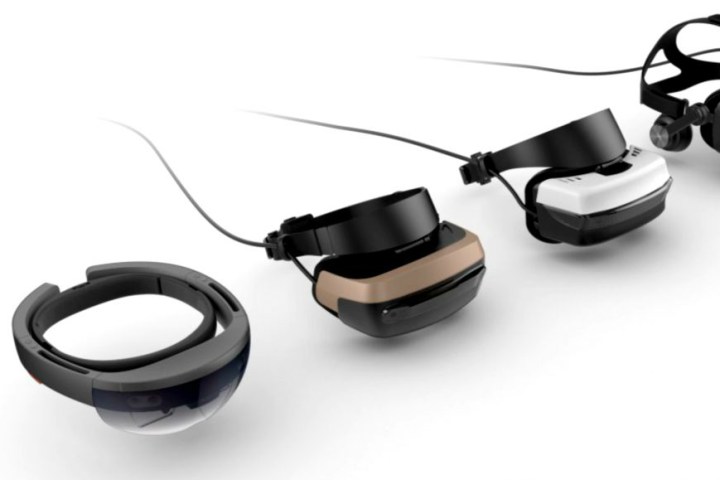
Microsoft is out to challenge both, with a lower cost of entry for mixed reality — meaning VR combined with augmented reality (AR) — head-mounted displays (HMDs) that the company originally as coming from OEMs in 2017. While entry-level HMDs will start at $300, their PC requirements weren’t announced at Microsoft’s Creators Update event, and that’s apparently been rectified at Microsoft’s recent WinHEC conference, as Tom’s Hardware reports.
The new HMDs jointly announced by Intel and Microsoft will offer a range of capabilities, from 1080 x 1200 resolution per eye up to 1440 x 1440 per eye, and a host of different connectivity options. That means that while pricing starts out much lower than competing VR systems for lower mixed reality capabilities, you’ll likely have to pay closer to the going rate for full-on VR gaming.
Similarly, the lower-end HMDs will require lower specs from PCs as well, further easing the cost of entry into the world of VR. On the low end, HMDs connected to notebooks will support casual games, 360-degree video, and simpler Universal Windows Apps via Windows Holographic with only an Intel Core i5 (for example, the Core i5-7200U), Intel HD 620 graphics, and 8GB of RAM driving things. Desktop PCs will have a lower minimum spec CPU, for example, a desktop Core i3 processor (for example, Core i3-6100 or higher).
Ramping up to higher-end VR games running on premium HMDs will require dedicated graphics, faster CPUs, and more RAM whether you’re running on a notebook or a desktop. Things get confusing from there, however in that Microsoft indicated these lower minimum specs are as of “Holiday ’17.” As of Creators Update, coming in spring 2017, more robust specifications similar to today’s VR systems with Nvidia or AMD dedicated graphics or higher will be required.
That uncertainty aside, it’s clear that Microsoft and Intel want to make mixed reality HMDs more affordable and accessible to more people running lower-end PCs. These systems won’t replace today’s high-end VR gaming systems, but rather augment them and bring mixed reality to a much wider audience. No matter how things shake out in terms of PC specifications and pricing, it’s obvious that mixed reality will be an important PC trend in 2017.





